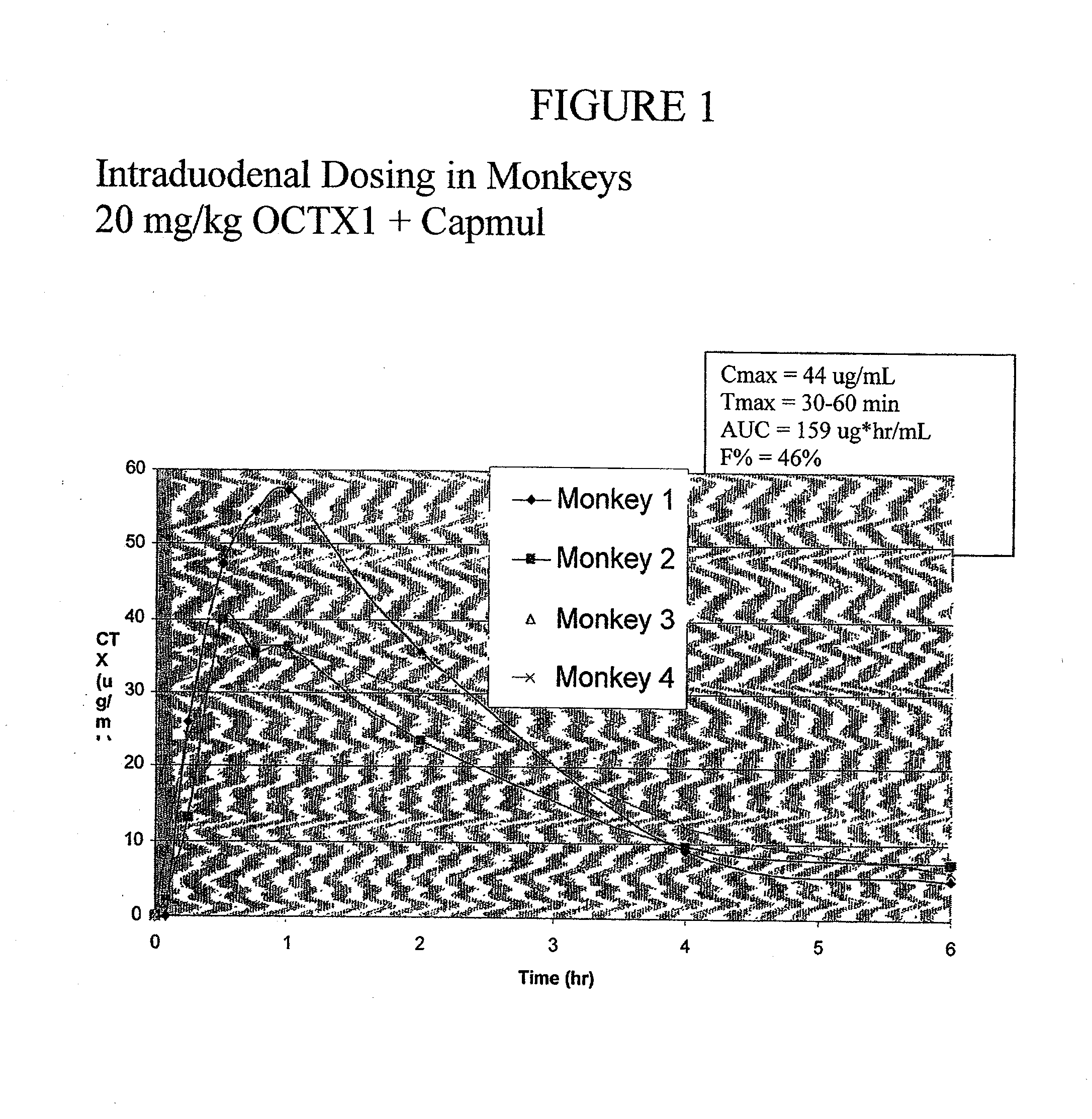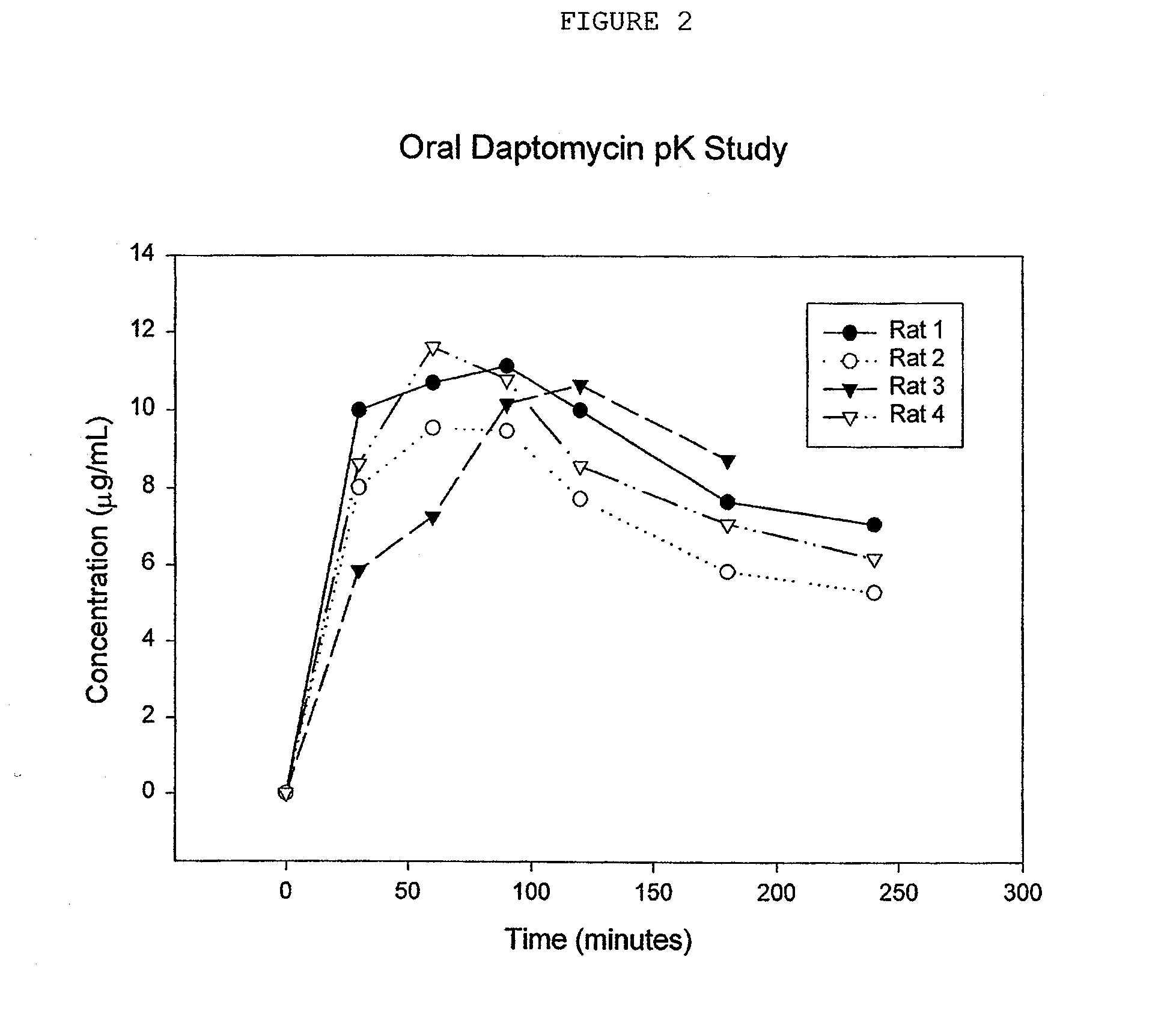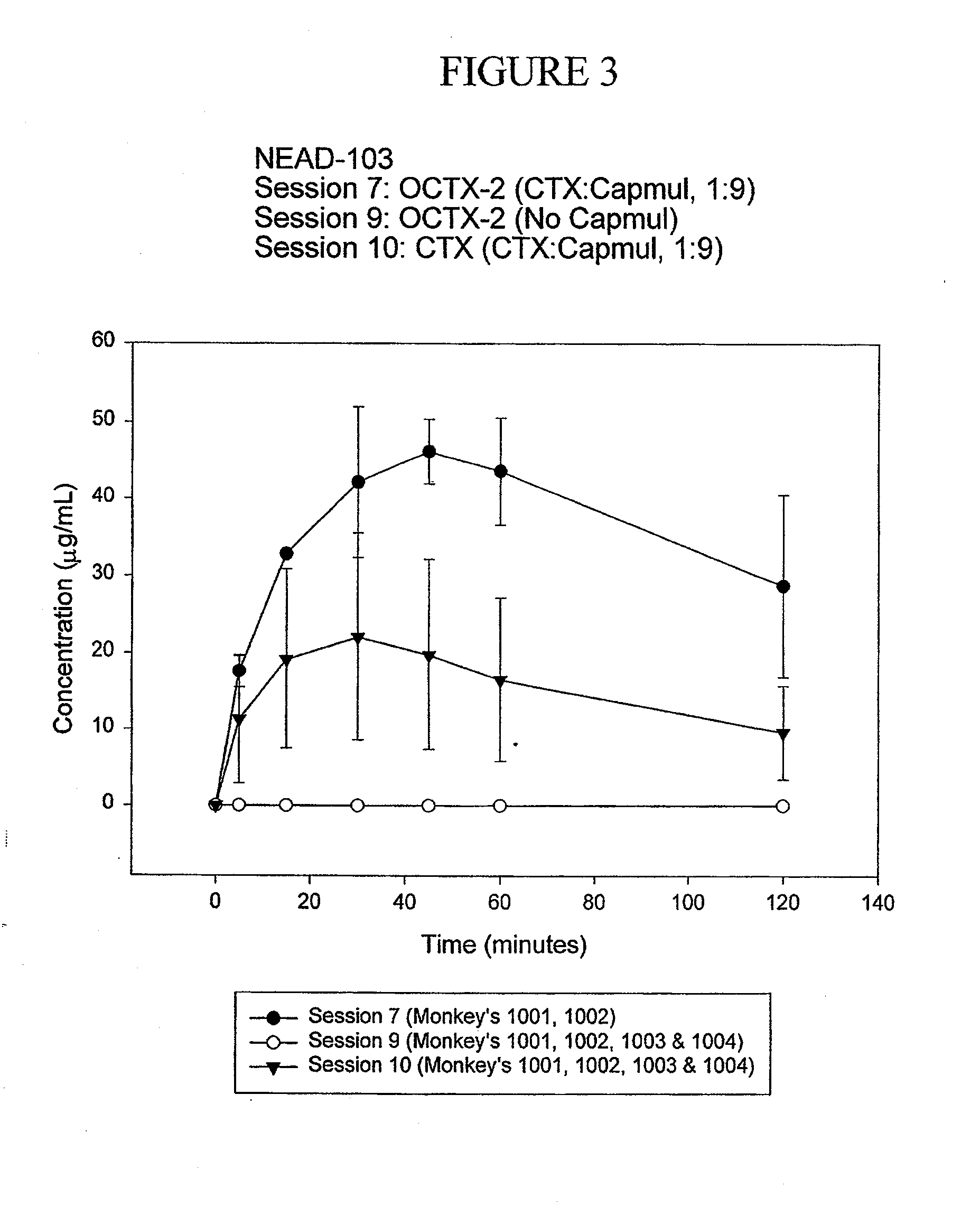Compositions and methods for increasing the oral absorption of antimicrobials
a technology of antimicrobials and compositions, applied in the field of compositions and methods for increasing the oral absorption of antimicrobials, can solve the problems of affecting the overall absorption of active drugs, affecting the absorption rate of active drugs, and unable to resist degradation or deactivation, etc., to achieve the effect of improving the total uptake of active drugs, and improving the overall absorption rate of active drugs
- Summary
- Abstract
- Description
- Claims
- Application Information
AI Technical Summary
Benefits of technology
Problems solved by technology
Method used
Image
Examples
example 10
Plasma Concentration of Ceftriaxone Over Time in Rats after Intraduodenal (i.d.) Administration of a Ceftriaxone-Calcium-Carrageenan Complex
[0106]About 40 mg ceftriaxone (CTX) eq. / kg of the complex described in Example 1 was suspended in water and i.d. administered with 0.2 ml of capmul (an absorption enhancer) to four rats. At specific time intervals, 0.6 ml of blood was taken from each rat and centrifuged. About 0.2 ml of the blood plasma was then analyzed for CTX by HPLC. The results are represented in Table 7 below:
TABLE 7Average PlasmaTime After i.d.Concentration ofDosage (minutes)CTX (μg / ml)30536040903312025180142409
example 11
Plasma Concentration of Ceftriaxone Over Time in Rats after Intraduodenal (i.d.) Administration of the CTX with Capmul as Control
[0107]As a control, about 40 mg / kg of CTX was i.d. co-administered with 0.2 ml of capmul to four rats. See, Chemotherapy 34: 77-84 (1988). At specific time intervals, 0.6 ml of blood was taken from each rat and centrifuged. About 0.2 ml of the blood plasma was then analyzed for CTX by HPLC. The results are represented in Table 8 below:
TABLE 8Average PlasmaTime After i.d.Concentration ofDosage (minutes)CTX (μg / ml)30106011909120718062405
example 12
Plasma Concentration of Ceftriaxone Over Time in Rats after i.v. Administration
[0108]For comparison purposes, about 20 mg / kg of CTX was administered (i.v.) to four rats. At specific time intervals, 0.6 ml of blood was taken from each rat and centrifuged. About 0.2 ml of the blood plasma was then analyzed for CTX by HPLC. The results are shown in Table 9 below:
TABLE 9CapmulTotal CapmulCapmul:Capmul:Conc. ofAdministeredC max%Study #Test ArticleOCTXCTXEmulsion(g)(μg / mL)Bioavailability103-2OCTX1 (C)10:1N / A36-5748.5103-61 = OCTX1 (E)1 = 1:1 1 = 2.2:11 =21.6 mg / mL1 = 5-7 3.32 = OCTX2 (C) 2 = 10:12 = 11:12 =N / A2 = 44-5544.6103-71 = OCTX2 (E)1 = 5:11 = 9:1 1 =97.8 mg / mL1 = 43-4947.92 = OCTX2 (E) 2 = 10:12 = 18:12 =179.42 = 19-3923.6103-8CTX-Capmul (E)5:16.25:1 62.5 mg / mL14-3014.6103-9CTX-CG00000103-10CTX-Capmul (E) 9:12.5-31 (C)—Capmul chase(E)—Capmul emulsion
PUM
| Property | Measurement | Unit |
|---|---|---|
| pH | aaaaa | aaaaa |
| pH | aaaaa | aaaaa |
| thickness | aaaaa | aaaaa |
Abstract
Description
Claims
Application Information
 Login to View More
Login to View More - R&D
- Intellectual Property
- Life Sciences
- Materials
- Tech Scout
- Unparalleled Data Quality
- Higher Quality Content
- 60% Fewer Hallucinations
Browse by: Latest US Patents, China's latest patents, Technical Efficacy Thesaurus, Application Domain, Technology Topic, Popular Technical Reports.
© 2025 PatSnap. All rights reserved.Legal|Privacy policy|Modern Slavery Act Transparency Statement|Sitemap|About US| Contact US: help@patsnap.com



